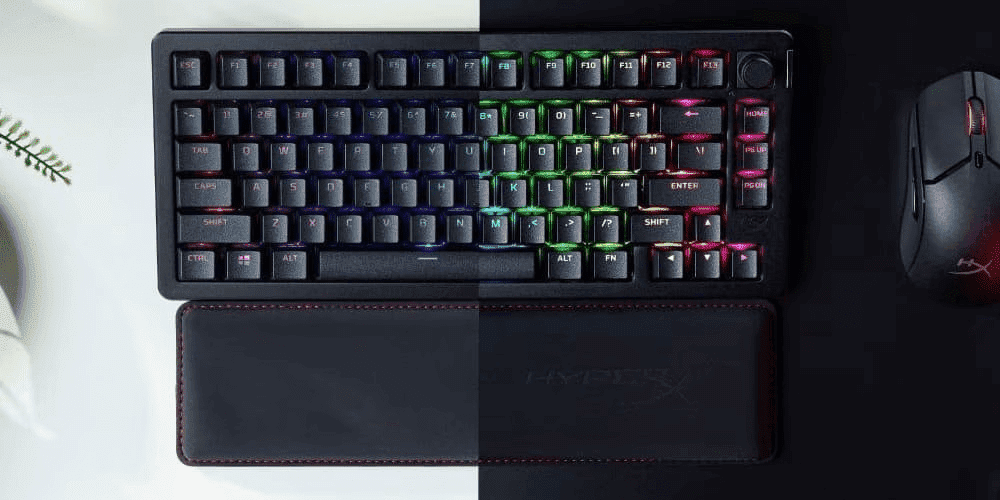Thank you for visiting the AUSTRALIA HP Store
-
Contact Us
CONTACT USCall us
- Sales
- 1300 540 516
- Technical support
- 13 23 47
Exc. public holidays
Chat with us- Our specialist are here to help
- Live Product Demo
- Sales
- 61288061500 (WhatsApp)
-

- Post Sales
- 61288061700(WhatsApp)
Exc. public holidays
Live product demo
Submit feedback We value your opinion! - My Account
How to Set Up RAID in Windows 10: A Comprehensive Guide


RAID (Redundant Array of Independent Disks) is a powerful storage technology that can significantly improve your computer’s performance, data protection, or both. Whether you’re a small business owner in Sydney looking to enhance speed or safeguard against drive failures, or an IT professional managing enterprise systems in Melbourne, learning how to configure RAID in Windows 11 is a valuable skill. In this comprehensive guide tailored for Australian users, we’ll walk you through the process of configuring various RAID levels in Windows 11 and discuss hardware options that support RAID configurations.
What is RAID?
RAID is a storage technology that combines multiple disk drive components into a logical unit for the purposes of data redundancy and performance improvement. It’s a form of data storage virtualisation technology that integrates multiple disk drives into a single logical unit. Depending on the RAID level you choose, you can achieve benefits such as:
- Increased storage performance
- Better data protection
- Improved fault tolerance
- Enhanced storage capacity utilisation
For Australian businesses dealing with large amounts of data or requiring high availability, RAID can be particularly beneficial in managing the unique challenges of our geographic isolation and sometimes unreliable internet connections.
Common RAID Levels
Before we dive into the setup process, let’s review the most common RAID levels:
- RAID 0 (Striping): Improves performance by spreading data across multiple drives, but offers no redundancy. RAID 0 offers no protection against disk failure, making it best for non-critical data where speed is the priority.
- RAID 1 (Mirroring): Provides data redundancy by creating an exact copy of data on two drives. Ideal for critical data that needs a backup, which is especially important for Australian businesses dealing with strict data protection regulations.
- RAID 5 (Striping with Parity): Offers a balance of performance and redundancy, requiring at least three drives. Good for businesses that need both speed and data protection, such as those in Australia’s growing tech sector.
- RAID 10 (Mirroring and Striping): Combines the benefits of RAID 1 and RAID 0, requiring at least four drives. Excellent for environments that need high performance and strong data protection, like Australia’s financial services industry.
How to Set Up a RAID Array in Windows 11
Windows 11 includes built-in tools for setting up software RAID. Here’s how to configure RAID and different RAID levels:
Prerequisites
- At least two hard drives for RAID 0 and RAID 1, utilising multiple disks for enhanced performance and redundancy
- At least three hard drives for RAID 5
- At least four hard drives for RAID 10
- Administrator access to your Windows 11 PC
Configuring RAID 0 or RAID 1
- Press Windows Key + X and select “Disk Management.”
- Right-click on the disk you want to use and select “New Striped Volume” for RAID 0 or “New Mirrored Volume” for RAID 1. RAID 1 mirrors the same data on two drives, ensuring data security through fault tolerance and redundancy.
- Follow the wizard, selecting the disks you want to include in the array.
- Choose a drive letter and format the new volume.
Configuring RAID 5
- Open the Start menu and type “Storage Spaces,” then select “Manage Storage Spaces.”
- Click “Create a new pool and storage space.”
- Select the drives you want to include in your RAID 5 array and click “Create pool.”
- Under “Resilience type,” select “Parity.”
- Choose a size for your storage space and click “Create storage space.”
After the setup, users will see a single disk in File Explorer, indicating the successful configuration of the RAID storage pool.
Configuring RAID 10
Setting up RAID 10 in Windows 11 requires a bit more work:
- First, create two RAID 1 arrays following the steps for RAID 1 above.
- Once you have two mirrored volumes, go back to Disk Management.
- Right-click on one of the mirrored volumes and select “New Striped Volume.”
- Add the second mirrored volume to this striped volume.
- Format the new volume to complete the RAID 10 setup.
RAID 10 provides redundancy, ensuring data is safe even if a disk fails, which is crucial for businesses in Australia’s remote areas where hardware replacements might take longer.
Best Practices for RAID Setup and Fault Tolerance
- Use identical drives: For best performance and reliability, use drives of the same make, model, and capacity.
- Regular backups: RAID is not a substitute for backups. Always maintain separate backups of your important data, especially considering Australia’s unique natural disaster risks.
- Monitor drive health: Use built-in tools or third-party software to monitor the health of your RAID array.
- Consider a hardware RAID controller: For mission-critical systems, a dedicated hardware RAID controller can offer better performance and features.
Choosing the best RAID configuration depends on your specific needs and circumstances. Australian businesses should consider factors like data protection laws, disaster recovery plans, and the potential impact of data loss on operations when selecting a RAID level.
Conclusion
Setting up RAID in Windows 11 can significantly improve your system’s performance and data protection capabilities. By following this guide, Australian users can configure various RAID levels to suit their specific needs. Remember to choose the right RAID level based on your requirements for speed, capacity, and redundancy, keeping in mind the unique challenges and regulations faced by Australian businesses.
For small businesses or home offices in Australia looking to implement a more robust RAID solution, HP’s business desktop lineup offers excellent options. These desktops provide the flexibility and power needed to run effective RAID configurations, along with the scalability to grow with your business.
Whether you’re using built-in Windows tools or dedicated hardware like HP’s business desktops, implementing RAID can give you peace of mind and enhanced storage capabilities. As always, be sure to keep regular backups of your data, even when using RAID for added protection. This is particularly important in Australia, where natural disasters like bushfires or floods can pose additional risks to data security.
For more information on HP products that support RAID configurations, visit the HP Business Laptops or HP Business Desktops pages to explore options tailored for Australian small and medium businesses. With the right RAID setup and hardware, your Australian business can enjoy improved data security and performance, helping you stay competitive in today’s fast-paced digital landscape.
- Sales
- 1300 540 516
- Technical support
- 13 23 47
Exc. public holidays
- Our specialist are here to help
- Live Product Demo
- Sales
- 61288061500 (WhatsApp)
-

- Post Sales
- 61288061700(WhatsApp)
Exc. public holidays
Live product demo








